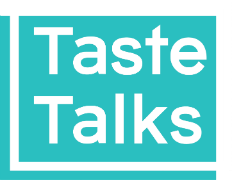Welcome to Eat Sleep Instagram , our weekly series of conversations with photographers behind the most drool-worthy Instagram accounts about how they’re navigating the digital age, deliciously.
This week, Taste Talks contributor Amanda Odmark caught up with Food Network writer and food literature savant Eric Joonho Kim , who talked to us about Korean pop-ups at jewel box dessert restaurants, taking taco photos so good celebrities hit like, and the nostalgia of cheesecake.
____________________
How much time do you spend on social media?
Too much time; I’m always on Instagram (though mostly at night before bed, after which I’ll almost always have to get up, pig out, and brush my teeth again because I only follow food accounts that make me hungry).
What draws you to the food/Instagram space?
It’s so ingestible (and digestible), the food image but also the caption. As with headnotes on recipes, nothing draws me more than a thoughtful food story.
How did you get involved in the transcultural pop-up at Butter and Scotch, and what was that experience like?
The menu sounded amazing. My colleague at work started @yooeating , a Korean comfort food pop-up. But she was very humble about it, so I only found out through Instagram. Each month is a different inflection; that is, Korean food inflected with, say, Brazil, or the American South. The food is as trans-culturally honest as the immigrant experience. I went to a couple pop-ups and eventually started working the line with her because I found the food fiercely creative and believed in the project so much.
Do you think you’ve had to work really hard to get your following, or has it been organic? What’s your method?
Definitely organic — though I don’t know if I have a following! These days, on Instagram at least (especially for food), I feel like having a following means 50k or 100k. But that’s actually what I like about my Instagram “space”: it’s small and intimate, like a good dinner party. No pressure to post, brand or censor myself.
Do you have a favorite story of social media connecting you to someone you admire?
I have a huge crush on Lukas Volger ; I met him first on Instagram and later at a food entrepreneurs’ event he was hosting. I didn’t know how to approach him and did the whole, “I think I know you…?”; it was the worst. Anyway, I admire the way he’s so smartly taken the vegetable out of the realm of glorified side dish and into main course in and of itself. A close second and third are when Sam Sifton liked my jajangmyeon response to his Times story and when Rose McGowan liked one of my pictures (probably a taco or something).
How did you get into the food media world?
I’ve been working at Food Network on and off since I was 19, in digital specifically, so it’s always been in my life, I guess? If we want to talk about the gay food media world, however, it was the first publication of Jarry Mag — and quite literally, their hashtag #jarrytype — that connected me with the food professionals I’m friends with today.
What distinguishes gay food media from food media in general?
Gay food media brings identity politics into the mix, granularizes the conversation. John Birdsall probably says it best when he asks the question, “Is there a gay sensibility?” At first it seems hard to pinpoint unless you read the old guys, i.e. the great American food writing of the ’70s (James Beard, Richard Olney, Craig Claiborne). But actually, digital media today is where you can see this “gay sensibility” in real time — not necessarily in the sharp-jawed shirtless boys eating Big Gay Ice Cream cones, or even in those indulgent aerial shots of pantless couples and their perfectly askew avocado toasts on #sundaymorning. More so, I guess, I’m thinking of the larger backdrops, e.g. closetedness in the restaurant kitchen, the cultural history of bachelordom pre-SCOTUS, queerness in food journalism, the lime cheesecake I made for my boyfriend’s birthday before we broke up.
I will say: I do think the “gay” part of food media is hard to nominalize because my generation’s experiences, and my “taste memories” (as Beard calls them), are different than Birdsall’s; my salades composées weren’t necessarily “thickets of yearning,” nor did my food have “a fierce edge born of imposed isolation.” I had it easier. By the time I got to college, gay marriage was being legalized in New York and soon after you could graduate with a Food Studies degree from NYU. And interning at Food Network was normal. But I think that’s the point. If gay food media looks any different than the other kind, then it has to do with the set of experiences, which are bound to be different, and multiple.
Are you trying to cultivate community on Instagram?
Maybe subconsciously. I’m desperately alone (but not lonely!) in my day-to-day, so I look forward to the small moments I can share on Instagram without having to leave my couch and bag of kettle chips (just kidding, I don’t have a couch).
Do you have any rules or advice for folks who are working to develop their social platform?
Don’t use bots to comment generic responses like “heart emoji” and “Delicious!” People can see right through it; it’s insulting! Write a good caption instead; for me, it’s worth more than the picture.










